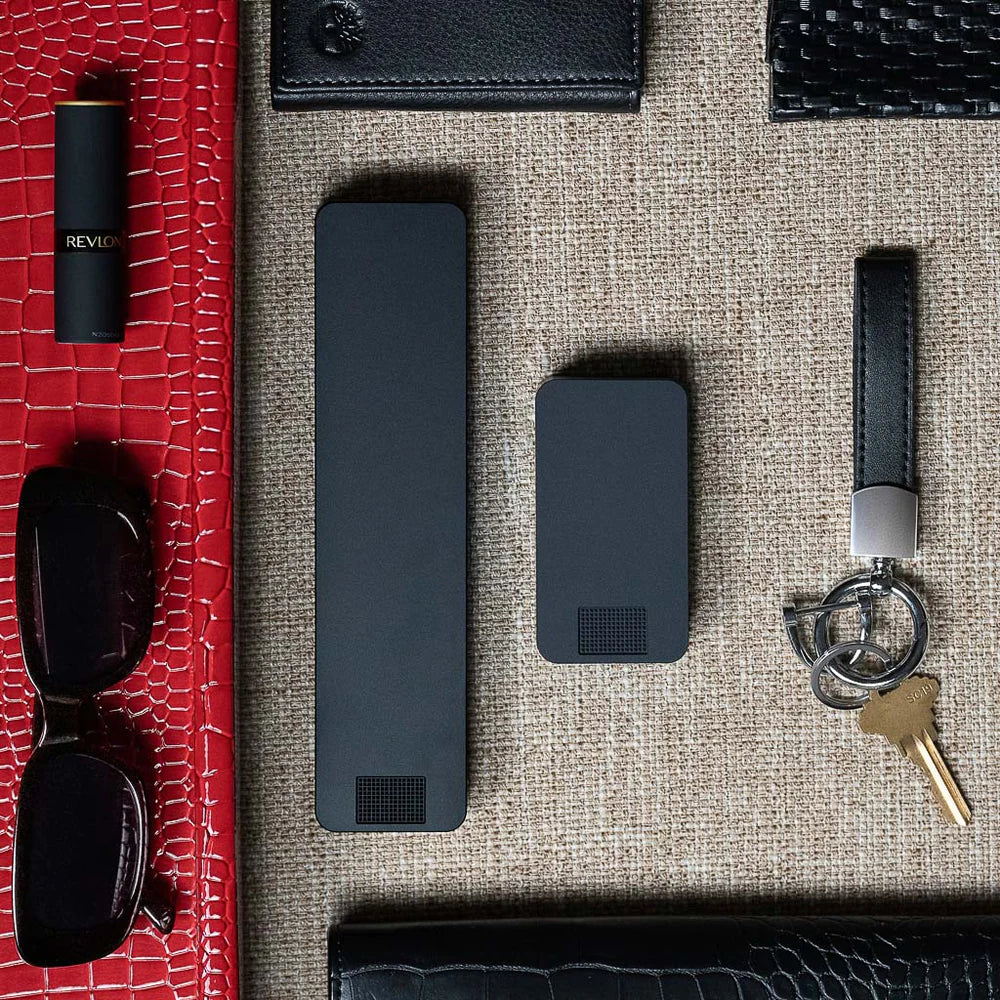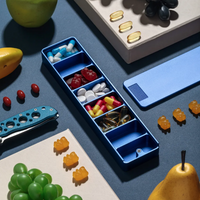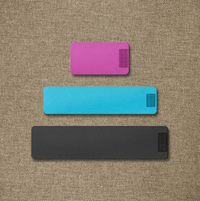How to Fix a Broken Pill Case

Remembering to take pills is a breeze with the help of a pill organizer, as they provide helpful reminders and a convenient setup for your medicine.
But what happens when your trusty pill organizer breaks? Dealing with a broken pill case can be stressful, but repairs are possible if the damage is mild. In this guide, we’ll cover everything you need to know about how to fix broken pill cases, from the tools you’ll need to determine when it’s time to buy a new one.
And if your pill case is beyond repair, we’ll help you find the best new durable pill organizers as a replacement. In fact, you can find the world’s #1 metal pill cases at Ikigai Cases. With our 100% anodized aluminum cases, you won’t have to stress about them breaking for years to come!
For now, let’s explore why pill cases tend to break in the first place.
What Causes Pill Organizers to Break?
Before you learn how to fix broken pill cases, it’s vital to understand the causes behind damage. Most pill cases break due to cheaper materials, incorrect usage, lack of maintenance, and harsh conditions.
Common Materials and Their Vulnerabilities
The materials used to create most pill cases are a common cause of damage. But what is a pill case made of, really?
Most pill organizers are made of plastic, but you can also find more durable options made of tough metals like aluminum.
Soft, cheap plastics like polypropylene and polyethylene are vulnerable to temperature changes and warping over time. Conversely, harder plastics like acrylic or ceramic found in DIY pill organizers are more resistant to warping but will quickly shatter into pieces if dropped.
While a low-quality plastic pill case costs less than sturdy metal alternatives, you’ll find yourself replacing them far more often.
Typical Usage Mistakes Leading to Damage
Understanding how to use a pill organizer properly can also go a long way toward keeping your case in tip-top shape.
For example, trying to fill a pill organizer faster by stuffing a bunch of pills into each compartment can backfire if it puts too much stress on the underlying material. Similarly, failing to close the latches of your case correctly can expose delicate plastics to extreme temperatures.
You also want to avoid excessive forces, like forcing your case open or dropping it, as this will lead to damage.
Environmental Factors Affecting Durability
Beyond how you handle your case, you also need to be aware of how you are using and storing it. Extreme temperature changes and excess moisture can wear down cheap plastic cases, requiring repairs.
For example, flying with pills can introduce harsh temperatures and moisture levels in the air.
Additionally, exposure to sunlight and other sources of UV rays will cause plastic cases to turn brittle and crack quickly, even when indirectly exposed. Ensure you are storing your pill case in the safest possible location.
How to Fix a Broken Pill Case
We now know some of the culprits behind the most common types of damage, but it’s time we switch gears to discuss solutions rather than causes. We’ll explore how to fix broken pill cases across a few everyday use cases, from loose tabs and latches to cracked surfaces.
Can You Fix a Broken Pill Case?
But before we learn how to fix broken pill cases, is it even possible? The answer is, well… maybe.
Depending on the damage to your case, a simple fix could be all you need to extend its lifespan. On the other hand, the damage could require expertise you don’t have to repair it, making it a lost cause.
Reattaching Loose Components
One of the most common forms of damage on a pill case is loose components, like tabs or covers for the internal compartments. This is common in plastic cases, which won’t take much to break.
A strong adhesive can do the trick in some cases. You can pair hot glue with tape in most situations.
We recommend cleaning your case thoroughly with soap, water, and some rubbing alcohol to prepare. Once that's done, apply your glue of choice around the edges of the loose piece. You’ll want to hold it firmly for about a minute to let the adhesive set, then wait an hour for it to air-dry.
Once that’s all set, you can reinforce the component with clear tape.
Mending Cracks in Plastic Cases
Learning how to fix broken pill cases with cracks is a bit trickier, though doable for smaller bits of damage. You’ll need a stronger super glue or epoxy to mend the broken cracks properly. We also recommend adding baking soda to bolster the adhesive power.
Your glue of choice will have specific instructions on how long you need to keep everything clamped together while drying but expect anywhere from 5 minutes to multiple hours.
Fixing Latch Mechanisms
Latches can also break with cheaper plastic organizers. Repairing a broken latch can be tricky without proper experience, but it is possible if you are dedicated to saving your case.
You’ll need to find replacement parts matching any small screws, nuts, and bolts located on your current cases’ latches. With replacement parts available, try to reproduce the standard mechanism of your case. Verify that everything works as intended before allowing your glue or epoxy to dry.
Restoring Damaged Surfaces
There are a few types of surface damage to consider when learning how to fix broken pill cases. In many cases, you can fix discolored or faded labels with paint. A fresh coat of paint is also a fun way to decorate a pill organizer and make it your own.
If there are a few scratches or nicks, you can use sandpaper to buff out those rough spots. A small helping of wax or a sealant can add extra shine once finished.
Okay, we’ve explored how to fix the most common damage you’ll encounter on a pill box. But how do you prevent damage from occurring at all?
Tips on Preventing Your Pill Case From Breaking in the First Place
An ounce of prevention is worth a pound of a cure, so let’s discuss how to keep your pill box pristine. With proper daily routines and maintenance practices, you can ensure your pill organizer lasts the entire length of its lifespan.
Proper Maintenance and Cleaning Practices
Learning how to clean a pill organizer and establishing a regular cleaning routine is critical to avoid the buildup of harmful residues.
The frequency of cleaning your case will vary based on its underlying materials. We recommend cleaning metal cases once a month, while cheaper plastic cases require even more upkeep, with biweekly being ideal.
Be sure to clean your case with water and mild soap, and avoid harsher cleaning chemicals, which may warp plastics. Once done cleaning, you’ll want your case to dry thoroughly to prevent excess moisture.
Beyond cleaning, be sure to visually inspect your case for any issues regularly. Letting a small crack develop into a vast hole can spell disaster for your pill organizer’s lifespan.
Best Practices for Daily Use
You want to avoid two things when using your case: over-filling it and not properly closing it.
Only fill your compartments with the recommended amount of pills. If you need more room for a complex dosing schedule, upgrading your case is better than adding excess stress to your current one.
Additionally, open and close your case gently rather than forcing compartments open. Properly securing your case after each use protects it from outside moisture without damaging the underlying structure.
Avoiding Common Mishandling Errors
Pill organizers made of cheaper materials can be frustratingly delicate, and what you may think of as normal handling can be disastrous for your case.
Be aware of your pill case inside bags or luggage, as accidentally brushing up against a case or dropping your bag could cause damage. You’ll also want to keep children and pets away from the case to prevent it from being handled roughly.
Additionally, keep your pill case out of sunlight, extreme temperatures, and high moisture levels. All three of these environmental factors can ruin your pill box's lifespan if it is made of cheaper materials.
Identifying When a Pill Organizer is Beyond Repair
Unfortunately, some damage goes beyond simple fixes. If mastering how to fix broken pill cases with the help of our guide isn’t enough, you’ll need to invest in a new one.
Recognizing the Signs of Irreparable Damage
If you see any of these signs, you must shop for a new pill box.
- Large Cracks: If the cracks compromise most of the case material, it is too far gone.
- Warped & Melted Plastic: Extensive warping, melting, or discoloration from heat often makes plastic brittle and unsalvageable.
- Faulty Parts: Components like lids that no longer stay attached after several adhesives or the case falling apart at the seams are signs of a case beyond repair.
- Signs of Damage: Rust or corrosion, especially on parts that cannot be reasonably replicated or replaced, like latches.
- Faded Labels: Worn labels or surfaces that make your internal compartments unidentifiable even after cleaning.
- Repairs Not Working: Finally, if you’ve tried everything in our guide and find that glue, epoxy, and tape are no longer cutting it, you’ll need to invest in a new one.
Choosing a Suitable Replacement
We’ve taught you how to fix broken pill cases and identify irreparable damage and provided tips on extending the lifespan of your current pill box.
So, the only thing left you have to figure out is where to get pill organizers when it’s time for a replacement!
We wholeheartedly recommend 100% metal pill cases, thanks to their long-lasting durability and accessible designs. But where can you find the best ones on the market?
Browse Our Selection at Ikigai Cases!
Right here at Ikigai Cases, of course! We are the world’s #1 home for 100% aluminum pill organizers that are durable, stylish, and accessible.
We founded our company to tackle some common problems in the industry. We watched as our father, who has a neurological condition that impairs his motor skills, struggled to manage a medicine regimen with cheap plastic cases. Cheap cases would break easily, looked drab and depressing, and were nearly impossible for him to open.
We set out to craft a case that checked all of those boxes. We used Aluminum 6061-T6, the same metal found in Apple products, and paired it with an innovative slide latch system accessible for all.
Coupled with a series of fun damage stress tests and voila, the best pill organizer on the internet was born.
From TSA-friendly pill boxes for travel that will never open accidentally in your luggage to 7 day pill organizers for managing weekly routines, we’ve got you covered.
Our cases can also serve as vitamin organizers to ensure you stay on top of your dietary needs.
We also have the best refund and warranty policies in the industry. If you invest in a small case and realize later that an AM PM pill organizer would suit you better, just reach out to our friendly customer support team, and we’ll exchange or refund you a new one, no questions asked.
We also provide a lifetime product warranty so you can skip the DIY repairs.
Closing Thoughts on How to Fix a Broken Pill Case
While sometimes a simple fix is all you need for your case, it is vital to assess the damage thoroughly. With the help of this guide, you can determine if your case is repairable or if it is time to invest in a new metal case from Ikigai Cases.
If you enjoyed our guide on how to fix broken pill cases, check out our blog! Our latest guides include traveling with supplements, do pills go bad if not in a bottle, and packing pills for travel.
Otherwise, if you’re ready to skip costly and time-consuming DIY repairs by investing in a daily pill box that will stand the test of time, you’re in the right place. Shop our inventory of 100% aluminum cases, or reach out to our friendly team to create a personalized solution for your regimen today!
 Pill Cases
Pill Cases Bundle & Save
Bundle & Save